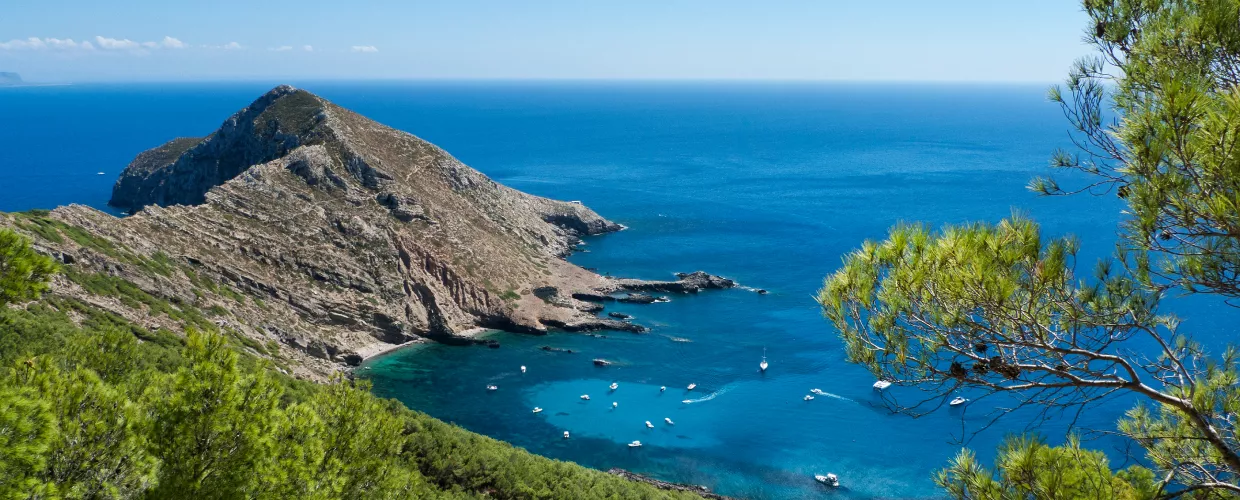This content was automatically translated. View the original text.

Overview
Marettimo, hiking and the sea in an unspoilt oasis
The westernmost of the Egadi Islands, Marettimo is a wild, mountainous island covered in thick scrub, where human impact has been minimal.
It has archaeological sites, a Spanish fort, plenty of sea caves, hiking trails and a few beaches that can be reached by land, where the color of the sea is astonishing.
There are no hotels in Marettimo, only rooms in residents' homes where hospitality is strictly island style.
History, archaeology and emigration
Marettimo welcomes you into a small port with turquoise waters and white houses. The name has nothing to do with the sea or seafaring; rather, the etymology refers to the thyme plant that grows wild here (with 'thymus' meaning 'thyme').
To get to know the island and the locals, it’s worth visiting the Museo del mare, delle attività e tradizioni marinare e dell'emigrazione (Museum of the Sea, Maritime Activities and Traditions and Emigration), run by a local association, located in the centre of the village. In its display cases, amidst the seafaring tools and old photos of migrants with cardboard suitcases, is the historical memory of a community that had to leave the island to go and work in various countries around the world, and which is trying to protect its identity.
Above the village, along the path leading up the mountain, you will find a small archaeological site, known as the Roman houses, with the remains of a building from the late Republican period. After defeating the Carthaginians in the First Punic War with the Battle of the Egadi Islands (241 B.C.), Rome made Marettimo a military stronghold and installed a garrison on the island, so it is not surprising to find Roman artifacts on this strip of land, however remote. Next to the Roman houses is a tiny Byzantine chapel dating back to the 11th century.
The 400 caves of Marettimo
From the harbour, you can board a boat to tour the caves of Marettimo, which are one of the highlights of the island. There are about 400 of them in total, all different in shape, colour, size and characteristics. In the Camel Cave there is a small pebble beach, the Nativity Cave has stalactites and stalagmites, the Bombard Cave is so called because of the hissing sound created inside it during sea storms, etc.
Depending on where the wind is blowing, Marettimo always has a sheltered slope where one can enjoy the sea and the air that is scented with thyme.
On the hiking trails overlooking the sea
Bring your hiking boots if you are going to Marettimo: there are several paths on the island that are well-marked by the forestry service, that allow you to discover the unspoilt nature of the area. There are at least six routes, some very easy, others a little more challenging, which, from the port, allow you to reach the most extreme points of the island.
Punta Troia, on the peninsula that can be seen from the port, can be reached in an hour and a half via a path that has stretches overhanging the sea. There, you can visit the Spanish fort, which was later used as a hard prison, and was recently restored and opened for visits.
The next day you may wish to go to Cala Bianca, on the western side: on the way back you can pass by Pizzo Falcone, at 686 meters, the highest point on the island. Amidst forests of Aleppo pines, the typical types of Mediterranean scrub and many endemic species, you will see how many birds, even birds of prey, have chosen to make their nests in Marettimo.
Marettimo TP, Italia